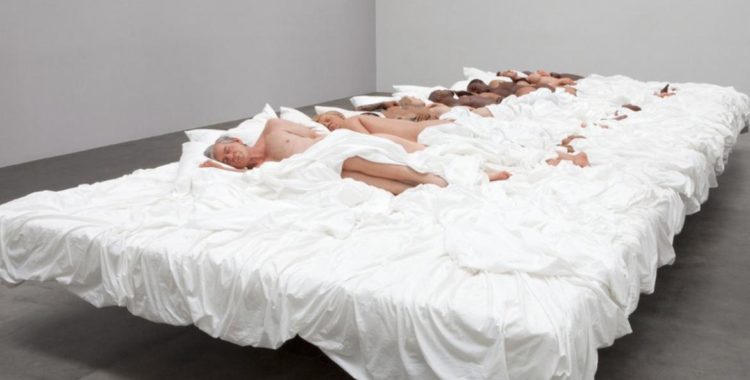
Is It For Sale? Kanye West’s “Famous” and the Definition of Art
September 05, 2016
by Diana Greenwald | Filed in: Current Events
Art historians and aesthetic philosophers have long debated how one can distinguish the fine arts from common visual culture. Across different eras, they have tried to draw lines around what is Art with a capital “A” and what is simply visual culture.
One quick way to draw borders around these different categories of cultural production is to look at prices. Peter Paul Rubens’ massive and expensive paintings produced for European royals—like those for Marie de Medici—are Art, while the crude uncompensated doodles in a seventeenth-century book are popular visual culture. This economic distinction, both explicitly and implicitly, continues to categorize images. Consider the relative value of a Roy Lichtenstein painting and the comic book that inspired it.
However, an effort to generate criteria dividing fine art from other visual culture has also produced a more philosophically rigorous distinction than simply monetary value. Inspired by viewing Andy Warhol’s Brillo Boxes, Arthur Danto wrote “The Artworld” (1964), one of the most important works of aesthetic philosophy. Concluding his discussion of how the designation of otherwise ordinary visual culture as Art depends on contemporary artistic theories, Danto writes:
“Brillo boxes enter the artworld with the same tonic incongruity the commedia dell’arte characters bring into Ariadne auf Naxos. Whatever is the artistically relevant predicate in virtue of which they gain their entry, the rest of the Artworld becomes that much the richer in having the opposite predicate available and applicable to the members. And, to return to the views of Hamlet with which we began this discussion, Brillo boxes may reveal us to ourselves as well as anything might: as a mirror held up to nature, they might serve to catch the conscience of our kings.”
Into this economic and philosophical minefield, enter Kanye West. The “recording artist, songwriter, record producer, fashion designer and entrepreneur” provoked strong reactions when he debuted the “visual” for his song “Famous.” The video centers on shots of a hyper-realistic sculpture of West and his wife Kim Kardashian West in a giant bed with ten other celebrities. Stylistically reminiscent of work by Ron Mueck and Charles Ray, the sculpture displays nude images of people ranging from Taylor Swift and Amber Rose, to Donald Trump and George W. Bush. The central image of the video has been condemned by Lena Dunham, praised by the artist whose painting inspired the work and subject to dozens of journalistic thought pieces. But is it Art?
According to the initial media reaction, the answer to this question was “No.” A music video readily available on YouTube is not Art, no matter if it seems to “reveal us to ourselves as well as anything might: as a mirror held up to nature, they might serve to catch the conscience of our kings.” However, the sculpture central to the video was recently shown at Los Angeles’ Blum & Poe art gallery. This placement of the work in a gallery context has altered critiques of the sculpture and West’s video. Deliberately placed in the Artworld—to use Danto’s language—the sculpture and the film it stars in take on new and more profound meaning. Nonetheless, it is important to note that in all the coverage and conversation the most talked about issues were “Is it for sale?” and “For how much?”
Making America Gilded Again: Aesthetics, Economics, and Trump’s Style >>
<< The Effects of Brexit on the Arts, Lessons from History
